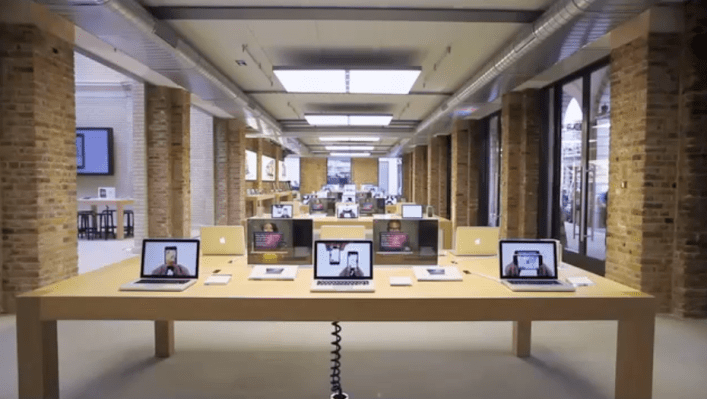A new patent application filing Thursday presents a detailed look at how Apple manages its retail floors, offering a behind-the-scenes perspective on a lot of elements that are likely already in use at Apple’s physical stores, as well as things that could potentially be introduced at a later date. Overall, Apple’s stores seem to operate like one giant hive mind directing an army of interactive display drones.
You’ve likely seen elements of this system in action at your local store. Those iPad-based displays that show off the specs of whatever you’re looking at, including iPhones, Macs and iPods. Those displays are described in the filing, alongside a centralized management system that acts as the brain and makes sure that when a customer walks into an Apple Store in Tokyo, they’ll have essentially the same experience as they would when they enter one in New York City. This central management app takes care of dynamic signage, sending out interactive floor maps, notices about appointment times for Genius Bar and One-to-One services, and more.
The filing notes that often these kinds of tasks are handled locally or regionally, but Apple’s differs by providing up-to-date information in real-time to customers around the world via in-store digital signage, and to employee devices. Since it’s all tied to a central server, displays attached to, say, the iPad section of any store can be instantly updated around the world with new or modified information, such as special changes in pricing. Displays can also be used to send out information about scheduled events and classes, or check inventory levels. Switching between customer- and employee-facing functions on the interactive displays is handled via a simple gesture, according to the patent application.
Some versions of the system also include indoor positioning systems based on GPS and Bluetooth to locate particular display installations and flag them for updates or interaction by store staff, which means it could help direct traffic within a store for finding a customer who needs help or directing staff to a kiosk that needs a manual update.
Apple is often cited as an innovator in retail, and mostly people point to things like store design and layout as the driving factor behind its success in that arena. What isn’t so clear is how much Apple’s use of innovative in-store display, POS and customer service and other systems have contributed to its ongoing ability to succeed in brick-and-mortar. This patent gives a glimpse at that side of the equation, both planned and present.
